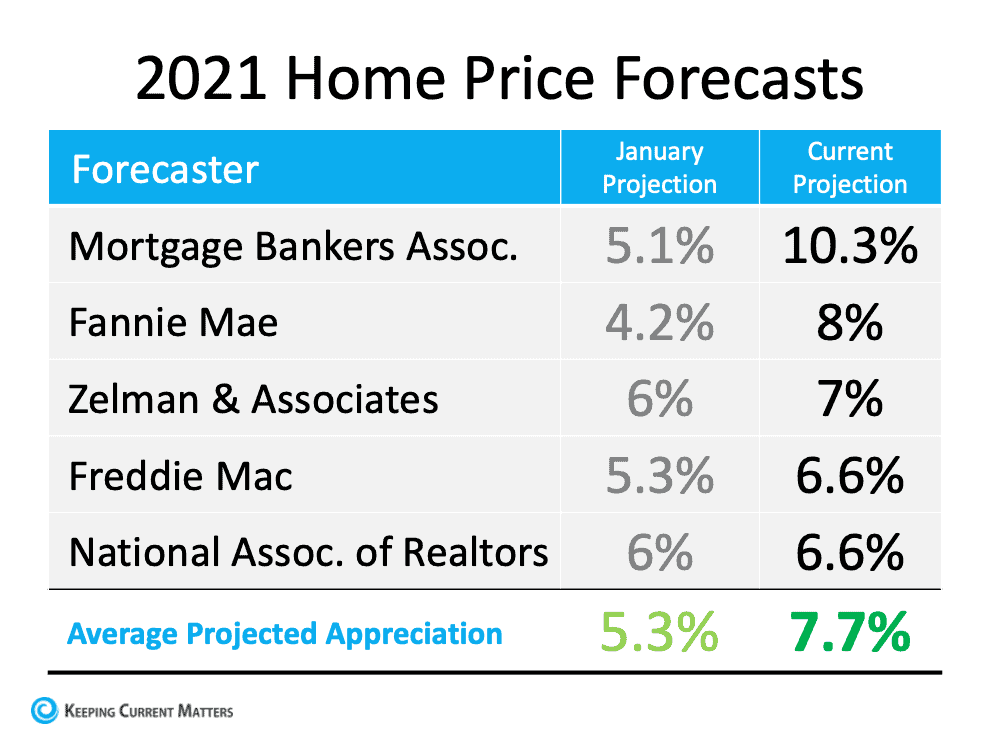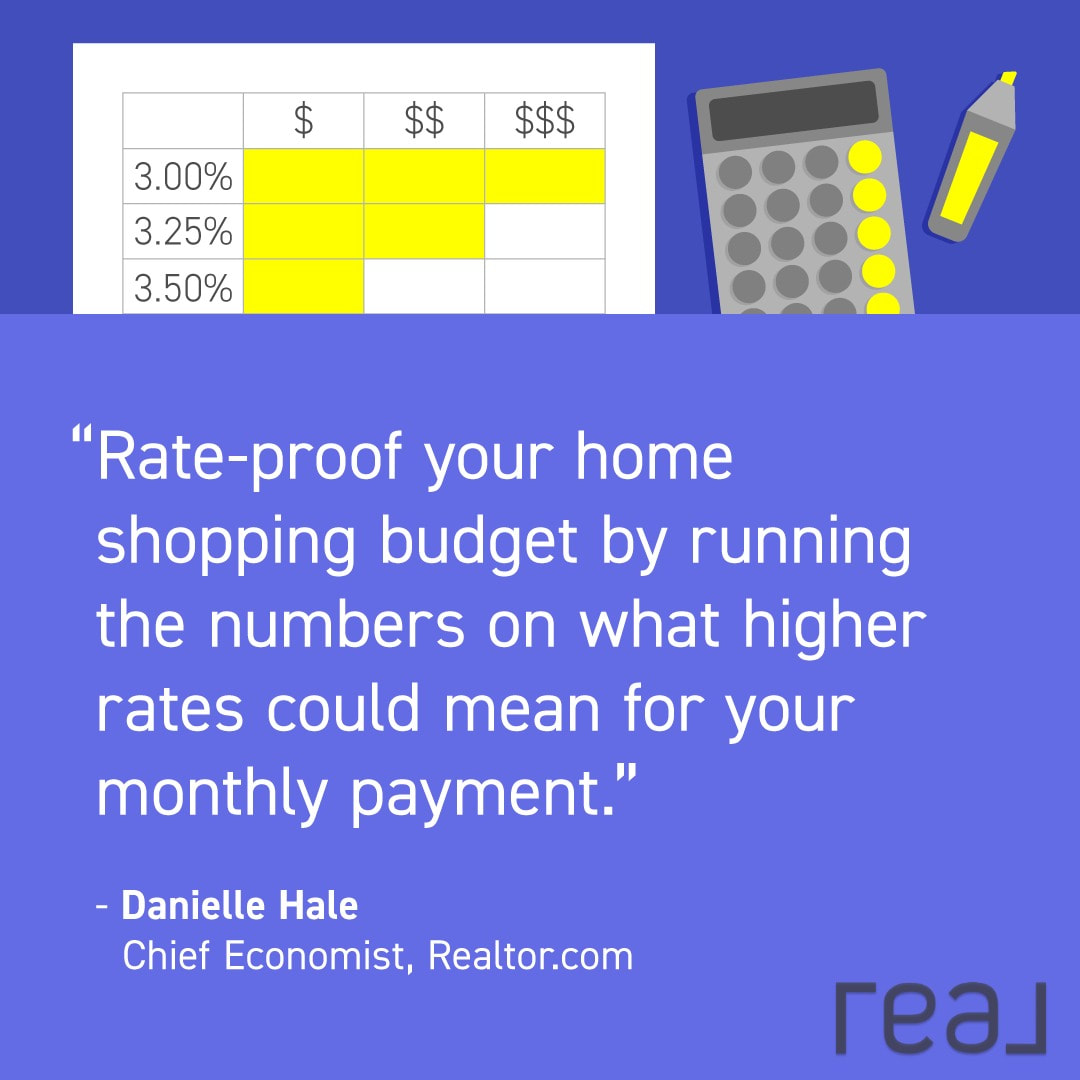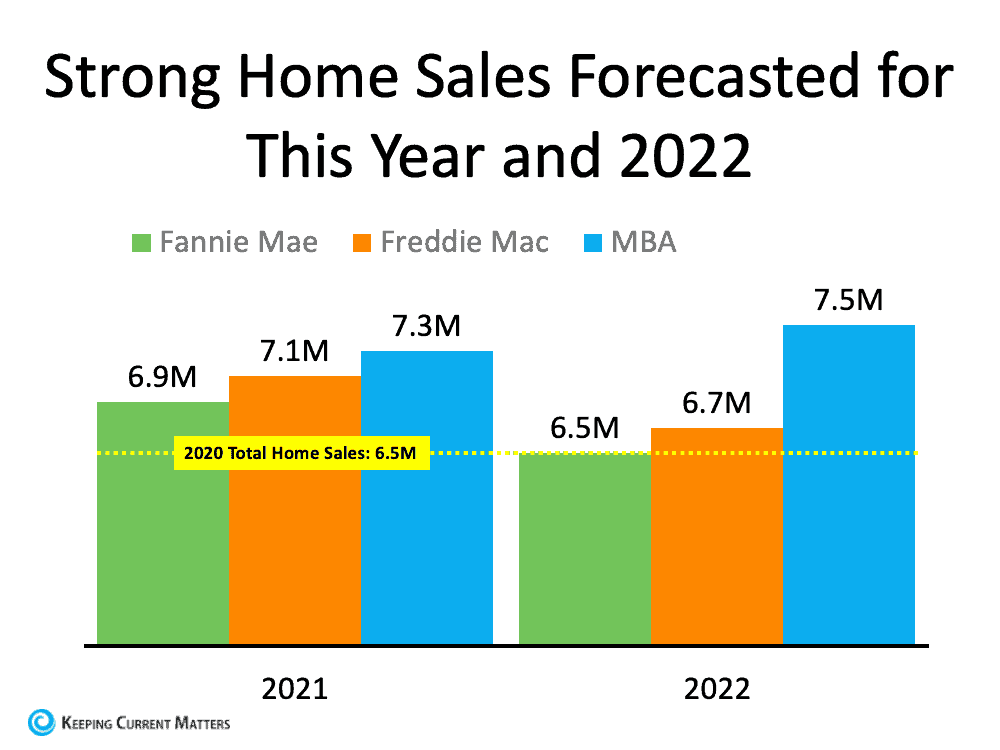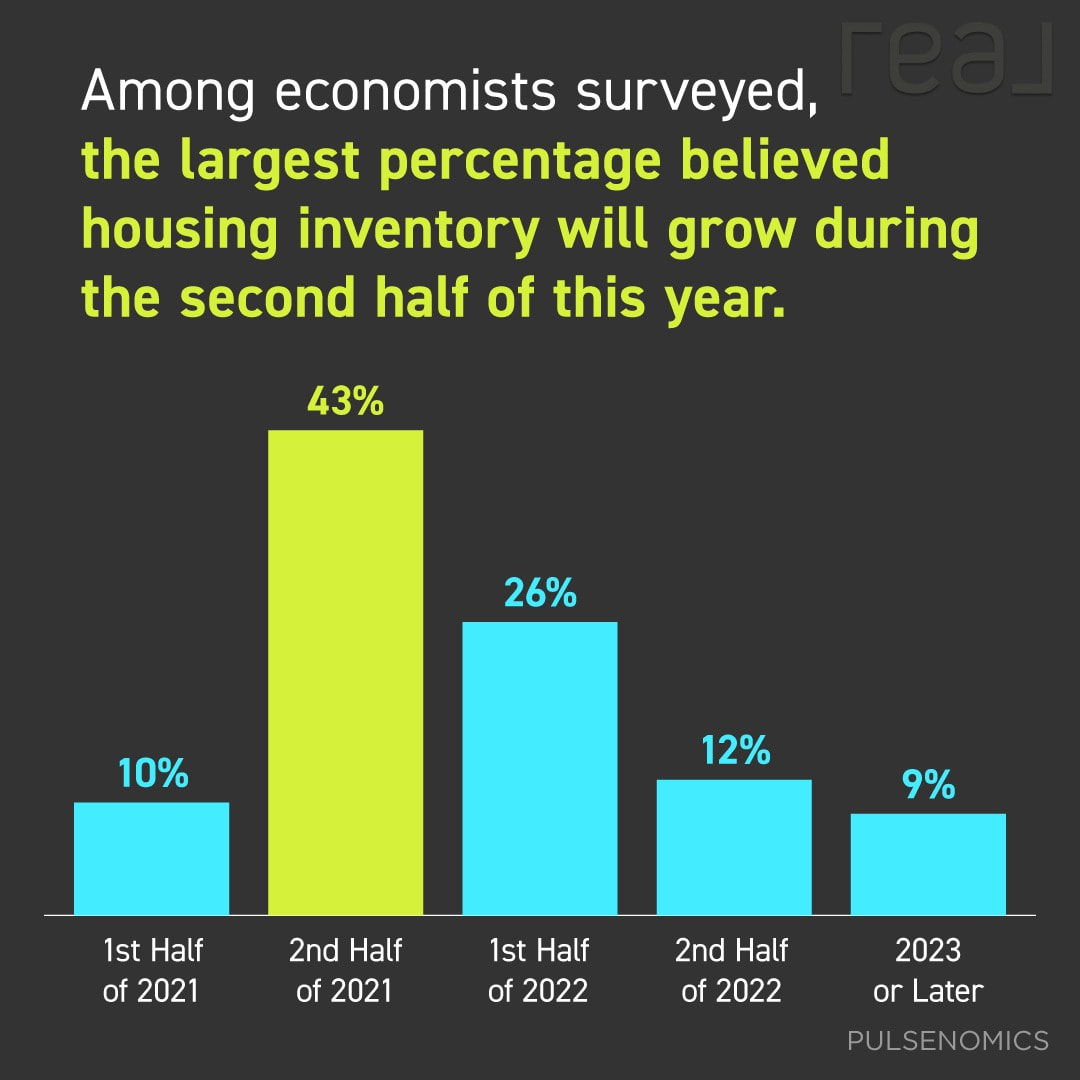|
Today’s housing market is fast-paced and competitive, but that hasn’t stopped homebuyers from feeling confident about opportunities in real estate. DM me if you have questions about the steps it takes to take to buy a home this year.
#buyingahome #NAR #daysonmarket #biddingwars #homebuying #expertanswers #stayinformed #staycurrent #powerfuldecisions #confidentdecisions #realestate #instarealtor #realestatetipsoftheday #realestatetipsandadvice #keepingcurrentmatters
0 Comments
Some Highlights
SOURCE KCM #BuyingMyths #Infographics #Pricing #SimardRealtyGroup #RealBrokerLLC A sellers’ market happens when there’s low supply (relatively few houses for sale) and high demand (a lot of buyers competing for those houses). These are the exact conditions we’re seeing in today’s housing market, and it’s creating the optimal conditions for homeowners who are ready to sell. DM me to discuss what to expect when you sell your house this year.
#sellersmarket #supplyanddemand #sellyourhouse #timetosell #realestate #homeownership #realestategoals #realestatetips #realestatelife #realestateadvice #realestatemarket #realestatetipsoftheday #realestatetipsandadvice #justsold #keepingcurrentmatters At the beginning of the year, industry forecasts called for home price appreciation to slow to about half of the double-digit increase we saw last year. The thinking was that inventory would increase from record-low levels and put an end to the bidding wars that have driven home prices up over the past twelve months. However, that increase in inventory has yet to materialize. The National Association of Realtors (NAR) reports that there are currently 410,000 fewer single-family homes available for sale than there were at this time last year. This has forced those who made appreciation forecasts this past January to amend those projections. The Mortgage Bankers Association, Fannie Mae, Freddie Mac, the National Association of Realtors, and Zelman & Associates have all adjusted their numbers upward after reviewing first quarter housing data. Here are their original forecasts and their newly updated projections: Even with the increases, the updated projections still don’t reach the above 10% appreciation levels of 2020. However, a jump in the average projection from 5.3% to 7.7% after just one quarter is substantial. Demand will remain strong, so future appreciation will be determined by how quickly listing inventory makes its way to the market.
Bottom Line Entering 2021, there was some speculation that we might see price appreciation slow dramatically this year. Today, experts believe that won’t be the case. Home values will remain strong throughout the year. SOURCE KCM #ForBuyers #Pricing #HousingMarketUpdate #SimardRealtyGroup #RealBrokerLLC
If you're ready to buy your first home, your tax refund and stimulus savings may cover more of a down payment than you realize. Let's connect to discuss how these key savings could add up big for your homebuying goals this year.
#TopGranbyRealtor #StephenSimard #RealBrokerLLC #GranbyRealEstate #GranbyConnecticut #FindyourGranbyhome #Newhomesforsale #SimardRealtyGroup #Granbyhomesforsale #JoinRealBrokerLLC #Simsburyhomes The question many homebuyers are facing this year is, “Why is it so hard to find a house?” We’re in the ultimate sellers’ market, which means real estate is ultra-competitive for buyers right now. The National Association of Realtors (NAR) notes homes are getting an average of 4.8 offers per sale, and that number keeps rising. Why? It’s because there are so few houses for sale. Low inventory in the housing market isn’t new, but it’s becoming more challenging to navigate. Danielle Hale, Chief Economist at realtor.com, explains: “The housing market is still relatively under supplied, and buyers can’t buy what’s not for sale. Relative to what we saw in 2017 to 2019, March 2021 was still roughly 117,000 new listings lower, adding to the pre-existing early-year gap of more than 200,000 fresh listings that would typically have come to market in January or February. Despite this week’s gain from a year ago, we’re 19 percent below the new seller activity that we saw in the same week in 2019.” While many homeowners paused their plans to sell during the height of the pandemic, this isn’t the main cause of today’s huge gap between supply and demand. Sam Khater, Vice President and Chief Economist at Freddie Mac, Economic Housing and Research Division, shares: “The main driver of the housing shortfall has been the long-term decline in the construction of single-family homes . . . That decline has resulted in the decrease in supply of entry-level single-family homes or, ’starter homes.’” When you consider the number of homes built in the U.S. by decade, the serious lack of new construction is clear (See graph below): The number of newly built homes is disproportionately lower than the rate of household formation, which, according to the U.S. Census Bureau, has continued to increase. Khater also explains:
“Even before the COVID-19 pandemic and current recession, the housing market was facing a substantial supply shortage and that deficit has grown. In 2018, we estimated that there was a housing supply shortage of approximately 2.5 million units, meaning that the U.S. economy was about 2.5 million units below what was needed to match long-term demand. Using the same methodology, we estimate that the housing shortage increased to 3.8 million units by the end of 2020. A continued increase in a housing shortage is extremely unusual; typically in a recession, housing demand declines and supply rises, causing inventory to rise above the long-term trend.” To catch up to current demand, Freddie Mac estimates we need to build almost four million homes. The good news is builders are working hard to get us there. The U.S. Census Bureau also states: “Privately-owned housing units authorized by building permits in March were at a seasonally adjusted annual rate of 1,766,000. This is 2.7 percent (±1.7 percent) above the revised February rate of 1,720,000 . . . Privately-owned housing starts in March were at a seasonally adjusted annual rate of 1,739,000. This is 19.4 percent (±13.7 percent) above the revised February estimate of 1,457,000. . . .” What does this mean? Lawrence Yun, Chief Economist at NAR, clarifies: “The March figure of 1.74 million housing starts is the highest in 14 years. Both single-family units and multifamily units ramped up. After 13 straight years of underproduction – the chief cause for today’s inventory shortage – this construction boom needs to last for at least three years to make up for the part shortfall. As trade-up buyers purchase newly constructed homes, their prior homes will show up in MLSs, and hence, more choices for consumers. Housing starts to housing completion could be 4 to 8 months, so be patient with the improvement to inventory. In the meantime, construction workers deserve cheers.” Bottom Line If you’re planning to buy this year, the key to success will be patience, given today’s low inventory environment. Contact a local real estate professional today to learn more about what’s happening in your area. SOURCE KCM #BuyingMyths #HousingMaretUpdates #Buyers #SimardRealtyGroup #RealBrokerLLC One of the most important parts of the homebuying process is planning your budget and knowing how big of a monthly payment you can afford. As mortgage rates fluctuate, make sure you understand how increases will impact that budget. DM me to learn how to calculate these figures so you feel confident in your plans.
#mortgagerates #homebudget #expertanswers #purchasingpower #buyingpower #homepriceappreciation #affordability #realestate #homevalues #homeownership #homebuying #realestategoals #realestatetips #realestatetipsandadvice #keepingcurrentmatters Last week’s Existing Home Sales Report from the National Association of Realtors (NAR) shows sales have dropped by 3.7% compared to the month before. This is the second consecutive month that sales have slumped. Some see this as evidence that the red-hot real estate market may be cooling. However, there could also be a simple explanation as to why existing home sales have slowed – there aren’t enough homes to buy. There are currently 410,000 fewer single-family homes available for sale than there were at this time last year. Lawrence Yun, Chief Economist at NAR, explains in the report: “The sales for March would have been measurably higher, had there been more inventory. Days-on-market are swift, multiple offers are prevalent, and buyer confidence is rising.” Yun’s insight was supported the next day when the Census Bureau released its Monthly New Residential Sales Report. It shows that newly constructed home sales are up 20.7% over the previous month. Buyer demand remains strong. With more of the adult population becoming vaccinated and job creation data showing encouraging signs, existing-home inventory is expected to grow in the coming months. What will this mean for home sales going forward? Fannie Mae, Freddie Mac, and the Mortgage Bankers Association (MBA) have all forecasted that total home sales (existing homes and new construction) will continue their momentum both this year and next. Here’s a graph showing those projections: Bottom LineLiving through a pandemic has caused many to re-evaluate the importance of a home and the value of homeownership. The residential real estate market will benefit from both as we move forward.
SOURCE KCM #HousingmarketUpdates #NewConstruction #SimardRealtyGroup #RealBrokerLLC Among economists surveyed, the largest percentage believe housing inventory will grow during the second half of this year. If you’ve been thinking about selling your house, now’s the time to do so to maximize on high buyer competition. DM me so we can get started on preparing your house for a winning sale.
#homeinventory #realestate #homeownership #sellyourhouse #realestategoals #realestatetips #realestatelife #realestatenews #realestateagent #realestateexpert #realestateagency #instarealtor #realestatetipsoftheday #realestatetipsandadvice #keepingcurrentmatters Homeowners ready to make a move are definitely in a great position to sell today. Housing inventory is incredibly low, driving up buyer competition. This gives homeowners leverage to sell for the best possible terms, and it’s fueling a steady rise in home prices.
In such a hot market, houses are selling quickly. According to the National Association of Realtors (NAR), homes are typically on the market for just 18 short days. Despite the speed and opportunity for sellers, there are still steps you can take to prep your house to shine so you get the greatest possible return. 1. Make Buyers Feel at Home One of the ways to make this happen is to take time to declutter. Pack away any personal items like pictures, awards, and sentimental belongings. The more neutral and tidy the space, the easier it is for a buyer to picture themselves living there. According to the 2021 Profile of Home Staging by NAR: “82% of buyers’ agents said staging a home made it easier for a buyer to visualize the property as a future home.” Not only will your house potentially attract the attention of more buyers and likely sell quickly, but the same report also notes: “Eighteen percent of sellers’ agents said home staging increased the dollar value of a residence between 6% and 10%.” As Jessica Lautz, Vice President of Demographics and Behavior Insights for NAR, says: “Staging a home helps consumers see the full potential of a given space or property…It features the home in its best light and helps would-be buyers envision its various possibilities.” 2. Keep It Clean On top of making an effort to declutter, it’s important to keep your house neat and clean. Before a buyer stops by, be sure to pick up toys, make the beds, and wash the dishes. This is one more way to reduce the number of things that can distract a buyer from the appeal of the home. Ensure your home smells fresh and clean as well. Buyers will remember the smell of your house, and according to the same report from NAR, the kitchen is one of the most important rooms of the house to focus on if you want to attract more buyers. 3. Give Buyers Access Buyers are less likely to make an offer on your house if they aren’t able to easily schedule a time to check it out. If your home is available anytime, that opens up more opportunities for multiple buyers to go from curious to eager. It also allows buyers on tight schedules to still get in to see your house. While health continues to be a great concern throughout the country, it’s important to work with your agent to find the best safety measures and digital practices for your listing. This will drive visibility and create access options that also keep everyone in the process safe. 4. Price It Right Even in a sellers’ market, it’s crucial to set your house at the right price to maximize selling potential. Pricing your house too high is actually a detriment to the sale. The goal is to drive high attention from competing buyers and let bidding wars push the final sales price up. Work with your trusted real estate professional to determine the best list price for your house. Having an expert on your side in this process is truly essential. Bottom Line If you want to sell on your terms, in the least amount of time, and for the best price, today’s market sets the stage to make that happen. Contact a local real estate professional today to determine the best ways to maximize the sale of your house this year. #ForSellers #Pricing #SellingMyths #SimardRealtyGroup #RealBrokerLLC |
Archives
October 2022
Categories
All
|












 RSS Feed
RSS Feed